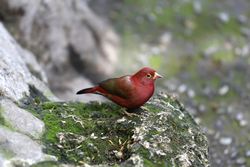Molecular take on evolution of the fittest
The AVIAN GENOMICS (Avian genomics and ecological speciation) project searched for the genes behind ecological speciation to develop model systems. Researchers harnessed the technologies of next-generation sequencing and association mapping to identify the genes behind the evolution of beak shape. Project researchers studied Nesospiza and Serinus finches in their native habitats. Extending the net to another three birds, including island Zosterops lateralis white-eyes in the Pacific, they incorporated conservation genetics to restricted-range birds in Angola and Lagonosticta finches endemic to West Africa. Project members generated sequencing libraries and built a draft reference genome for Z. lateralis, an ecological model. The large scale transcriptome sequence data collected has been used to annotate the Nesospiza genome. Restriction site-associated DNA markers, useful for association mapping, helped in sequencing a large set of individuals from species such as Nesospiza, Serinus and Zosterops. The massive amount of genomic data generated has shown that in the Neospiza/Serinus system there is mainly divergence in allopatry, that is, in geographically separated areas. The project collaborated with other labs to look for molecular signs of selection in data on polymorphisms, different phenotypes in the same population. Gene expression was used to pinpoint the genes responsible for differences in bill size. Building on the massive amount of data collected, the project will be able to analyse population differences in the finches. Of particular interest, AVIAN GENOMICS is studying a Nesospiza hybrid zone in Tristan da Cunha where evolution is in the making. Here, researchers found genetic regions that are under selection. This elaborated the biological, physiological and cellular functions of these genes and should help determine the genetic bases of adaptation and ultimately speciation. At project close, the researchers had made major headway into understanding how separate species evolve on a molecular basis. The work will also have a potential impact on conservation genomics and on biodiversity management in Africa and elsewhere.





